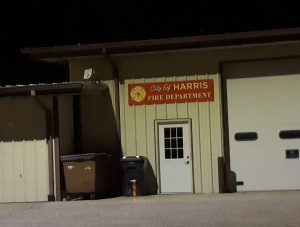Orange City, Iowa — Every January, the U.S. Environmental Protection Agency (the EPA) urges everyone across the United States to test their homes for radon gas, because January is Radon Action Month.
Sioux County Community Health Partners Community Health Services Director Kim Westerholm tells us what radon is.
(as said:) “Radon is a naturally occurring gas. It comes from rocks and dirt in the ground. You can’t smell it. You can’t see it. You can’t taste it, but it’s kind of always… it’s always in the air around us.”
She tells us radon is the second leading cause of lung cancer in the United States after smoking. Westerholm adds that if you smoke, your risk of lung cancer from radon is higher than just your risk from smoking or radon by themselves. Westerholm tells us that the entire state of Iowa is in an area with the highest prevalence of radon.
(as said:) “I think nationwide it’s 1 in 15 homes have high radon levels. Iowa’s just… the levels here are particularly higher than nationwide.”
According to information from the EPA, Iowa is one of only two states that are entirely in an area with the highest prevalence of the occurrence of the radioactive gas. So, says Westerholm, it’s even more important for people around here to have their homes checked.
(as said:) “It’s simple. It’s relatively inexpensive. You can get radon tests through our office Community Health Partners, or you can get them at city offices throughout Sioux County. The tests cost $10. You can pay that at the city office if you pick it up there or you can stop by our office here in Orange City and pick one up or now, we have an option that you can order a test online on our website and we will mail it to you.”
That website is siouxcountychp.org. Other counties have other ways to get test kits. You can call your county health department and they should be able to tell you what to do next.
Westerholm says if your home does have high levels of radon, there are some things you can do about it.
(as said:) “If you do end up with a high radon level which is greater than or equal to 4 that you really should follow up and have a radon mitigation specialist come to your home and help you decide what you can do to take care of the problem. Sometimes it’s just a matter of sealing up cracks where the radon can get in but there’s also like a piping system that they can put in to help suck the radon out from under your home so that it kind of gets vented out rather than continuing to accumulate in your home.”
To date, the EPA says tens of millions of homes have been tested for radon, and nearly two million with high radon levels have been fixed through the efforts of state and local radon programs, radon service providers, non-profit health organizations, and federal agencies. However, EPA estimates that millions of homes with high levels of radon remain.












